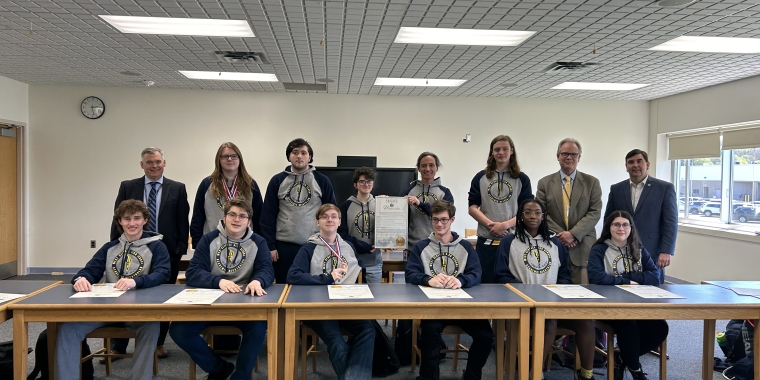
How a Baldwinsville mother fought for 30 years to pass a law that might have saved her daughter
Lisa Saunders prayed to God that she could love Elizabeth just the way she was — to see her as a little girl and not some hopeless prognosis.
Doctors in 1989 told Saunders her daughter would likely never walk, talk or feed herself. Saunders spent the first two months of Elizabeth’s life in a depression. She eventually decided she’d need to focus not on Elizabeth’s disabilities but her will to survive them. Her daughter loved to be held, rocked, and snuggled contentedly on her mother’s lap for hours. She studied her mother’s face with large blue eyes framed by long dark eyelashes. She grinned ear-to-ear when her mother smiled back at her. Saunders decided to take Elizabeth’s care one day at a time, for however long it would last.
“I was told Elizabeth could die unexpectedly at any moment,” Saunders said. “I could die at any moment for that matter. What was the point of losing my sanity fretting about tomorrow?”
Elizabeth lived 16 years. She died of a seizure in 2006.
Elizabeth had congenital cytomegalovirus, or cCMV. CMV is a virus that’s harmless to most people, but is the most common infectious cause of birth defects in the U.S., according to the CDC. About one out of every 200 babies is born with CMV, and of these babies, one in five will have long-term health problems. Elizabeth’s case was severe, eventually causing her to develop hearing loss, blindness and cerebral palsy.
After more than 30 years of advocacy, Saunders finally saw the passage and signing of ‘Elizabeth’s Law’ in New York last month. The law requires child care providers and physicians to educate pregnant women about the dangers of congenital CMV.
Saunders is a local author and public-access TV show host living in Baldwinsville with her husband Jim, an Auburn native and retired Pfizer scientist. She’s the founding member of the New York Stop CMV Project. Saunders has raised awareness for CMV through many mediums, including hosting events, working with non-profit organizations, connecting with other families about their experiences, posting on social media, and even by travelling New York’s 360-mile Erie Canalway Trail Challenge. Saunders and her husband have walked about 189 miles so far since starting in April 2020, leaving behind rocks painted with #StopCMV along the way and writing about their journey on Saunders’ blog.
When Saunders was pregnant with Elizabeth in the late 1980s, she was raising a toddler, running a licensed daycare out of her home and volunteering at a church nursery. Saunders said her doctors never told her those jobs put her daughter at risk for CMV.
Dr. Joseph Domachowske, professor of pediatrics, microbiology and immunology with a speciality in pediatric infectious diseases at SUNY Upstate Medical University, said CMV is so common that it’s “essentially impossible to avoid” for most people. But most infections show no signs or symptoms, and young children are major carriers of the virus. Women who frequently come in contact with children, like elementary school teachers, pediatric nurses, or childcare providers, are at a higher risk for contracting CMV, and pregnant women can pass the virus to their unborn child.
“[CMV] can reactivate frequently, especially in young kids,” Domachowske said. “Those kids will shed the CMV even though they have no symptoms whatsoever.”
CMV is transmitted through bodily fluids, like saliva and urine, so other risk factors include sharing food or eating utensils, kissing a child on the mouth, or not washing your hands after changing diapers, which Saunders said she didn’t know to avoid while pregnant.
“I felt sick at what my lack of knowledge had done to my little girl,” Saunders said. “In milder cases, children with congenital CMV may lose hearing or struggle with learning disabilities. But Elizabeth’s case was not a mild one.”
In the U.S., CMV legislation is separated by screening and preventative education. Only 18 states have CMV laws, and of those, seven require both education for pregnant women and screening of newborns, according to the National CMV Foundation. However, most of the screening laws require CMV testing for newborns who fail their initial hearing test. Domachowske said not all congenitally infected babies have hearing loss at birth, and most babies born with CMV can be asymptomatic, so the best way to diagnose CMV early involves prevention education and better forms of testing.
“Hearing tests are somewhat helpful, but it’s not the best answer, and it’s not the best way to handle this,” Domachowske said. “What’s coming down the pike is adding CMV to universal newborn screening panels, and having that test done will be very specific for CMV.”
Earlier this year, Minnesota became the first state to implement a universal screening law for CMV. Research advancements in CMV testing are developing. The New York Department of Health announced it will add CMV to its newborn screening panel by summer 2023, and Domachowske said Upstate will be one of many referral sites across the country to begin a new mRNA CMV vaccine clinical trial sometime in early or mid-January.
Saunders had experience with CMV legislation when she lived in Connecticut and worked with legislators to pass their screening law in 2015.
Sen. John Mannion (D-Geddes) sponsored the bill in the state senate and worked for two years to help get it passed and signed.
“Elizabeth’s Law is a fitting tribute to a young girl and her family that will help prevent similar tragedies in the future,” Mannion said. “The state of New York will now require that child care providers have the information and training they need to be aware of the dangers of congenital cytomegalovirus infection.”
Assemblymember Linda Rosenthal (D-Manhattan) said she became aware of CMV after reading a New York Times article in 2016. She began speaking with doctors and experts to pass the current CMV screening law in 2018, which also requires testing for newborns who fail their hearing test. Rosenthal met Saunders, who shared Elizabeth’s story. She came on as a sponsor for the bill in the Assembly.
“After speaking with Lisa and other mothers who hadn’t heard of this, it becomes much more personal,” Rosenthal said. “It was a pleasure working with her, and I know how much the loss of her daughter still hurts, so I really admire her for plunging forward and being so involved in trying to change things for other people.”
Saunders continues to connect with mothers in New York who currently care for children with disabilities caused by CMV.
Brandi Hurtubise lives in Buffalo with her husband, son, and six-year-old daughter Samantha. Samantha stays home for her schooling and therapy. She has spastic quadriplegia cerebral palsy, epilepsy, is non-verbal and deaf.
“She loves to swim, she loves to play, she loves books, but she definitely functions at a lower-than-typical level,” Hurtubise said. “There’s not a future where Sam is going to be mobile on her own, and I don’t see a future where Sam is going to be able to talk, so she’ll always be 110% dependent on myself, my husband, and her brother as she gets older.”
Hurtubise said her risks for contracting CMV were high because her first son was frequently in daycare while she was pregnant. She said doctors told her she “shouldn’t worry” about CMV, even after she tested positive for the virus and after her ultrasounds kept showing more signs of a cCMV infection. Now as the current New York committee chair for the National CMV Foundation, Hurtubise hopes to educate other mothers on the risks that she wished she knew before.
“There were so many things I avoided, and I know about toxoplasmosis and how you’re not supposed to change the cat litter when you’re pregnant from a movie I saw forever ago,” Hurtubise said. “So if [CMV] was something that you even just heard about a little bit, it’s something that so many women would try to avoid.”
Another western New York mother, Kristin Schuster, said her risk for contracting CMV came through her former job as a pre-kindergarten teacher when she was pregnant with her daughter Autumn. Autumn, 7, goes to school in special education classes and loves to walk, run, climb, and even ride horses, but is deaf and non-verbal, using a communication device to speak. Schuster said CMV can affect children in many different ways, and every family goes through their own challenges. She and her husband were given grim expectations for what their daughter’s future could look like, but Schuster said Autumn has proven her strengths against the odds.
“When you’re pregnant, and you’re thinking about what life is going to be like with your kid, especially with a teaching background, I thought I was going to teach my daughter, but it’s the complete opposite,” Schuster said. “Autumn is my greatest teacher. I can’t tell you how much I’ve had to learn just by being her mom, and she’s taught me more than I could ever teach her.”
Both Hurbutise and Schuster said Elizabeth’s Law would be a step in the right direction for people to be more educated on the dangers of CMV. Saunders said she will continue to advocate for awareness and is grateful for the passing of Elizabeth’s Law in memory of her daughter but knows there is more work to be done, such as pursuing national education legislation.
“For more than 30 years, I’ve been trying to tell women how to protect their unborn children from the leading viral cause of birth defects, and now I finally found a way, at least in New York,” Saunders said. “I received one of the best Christmas presents ever.”


